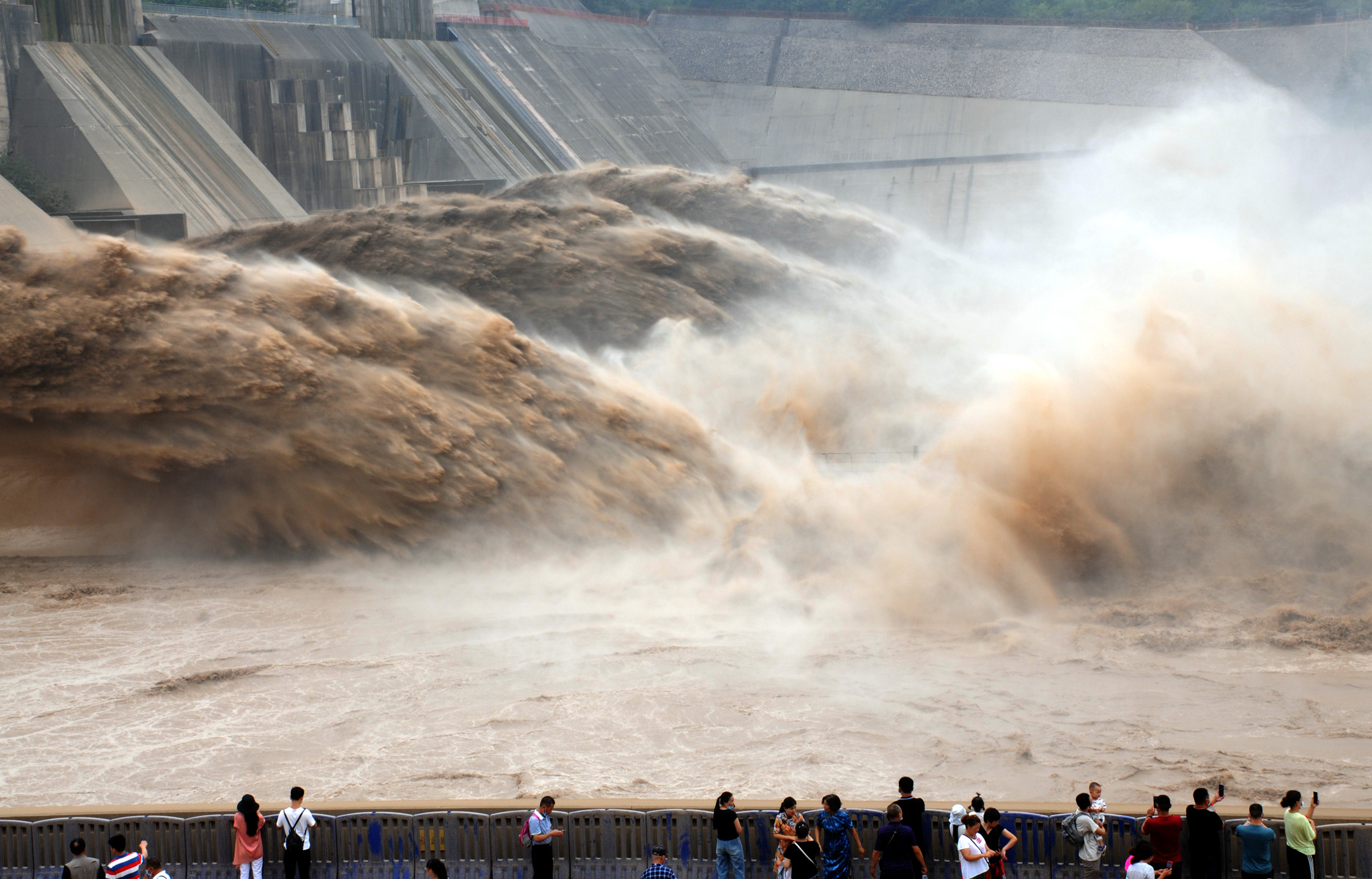Yellow River cleanup brings bright future
Updated: 2020-09-24

The Xiaolangdi Reservoir in Henan province discharges floodwater on July 26. MIAO QIUNAO/ASIA NEWS PHOTOS
Conservation
According to Cheng Xiaobo, Gansu's vice-governor, as an important water conservation and supply area for the river, the northwestern province has made progress in restoring the ecosystem, protecting water and soil and controlling pollution.
By the end of 2018, more than 24 percent of Gannan Tibetan autonomous prefecture in Gansu was covered by forests, while vegetation coverage, a comprehensive index of the flora covering the grassland, had reached 96.78 percent.
The prefecture supplies 6.95 billion cubic meters of water to the Yellow River every year, accounting for 11.4 percent of the total runoff-all the water entering the river from sources such as tributaries, rainfall and meltwater.
The provincial development and reform commission said Gansu is carrying out second phase projects to consolidate the health of the ecosystem by integrating the management of grassland, forests, wetland, biodiversity and the river basin.
Gansu, which is home to a large expanse of desert, is working to prevent sand and soil erosion through measures such as planting grass and restoring farmland to reduce the amount of sediment entering the Yellow River.
By the end of last year, the province had treated 65,700 sq km of land where sand and soil were easily carried away by winds and water, according to the provincial water resources department.
Pollution controls
During a May inspection tour of Shanxi, Xi expressed satisfaction with the changes made to the environment along the Fenhe River and stressed the importance of green development.
In recent decades, the water quality of the Fenhe has fallen as a result of the provincial economy's reliance on coal mining and heavy industry.
Water samples from major monitoring points were rated below Grade V, the lowest level in China's five-tier system of standards, according to the Shanxi Department of Ecology and Environment.
In 2015, the province began a campaign to improve the environment of the Fenhe and other rivers.
Curbing pollution from industrial and household wastewater is the most crucial part of the campaign as discharged wastewater once accounted for about 90 percent of the Fenhe's runoff, the department said.
By the end of June, all the river's monitoring points in Shanxi reported water quality at higher than Grade V.
Zhang Aizhen, a resident of Shanxi's Jingle county, exercises almost every day at a wetland park on the banks of the Fenhe.
She said the changes have been remarkable. "The river was once full of garbage and it stank. People who lived nearby couldn't open their windows in summer. Now, the environment is so pleasant that walking here always puts me in a good mood," she said.
According to officials, the province will invest more than 87 billion yuan ($12.8 billion) in the next 15 years to improve the Fenhe's environment.



